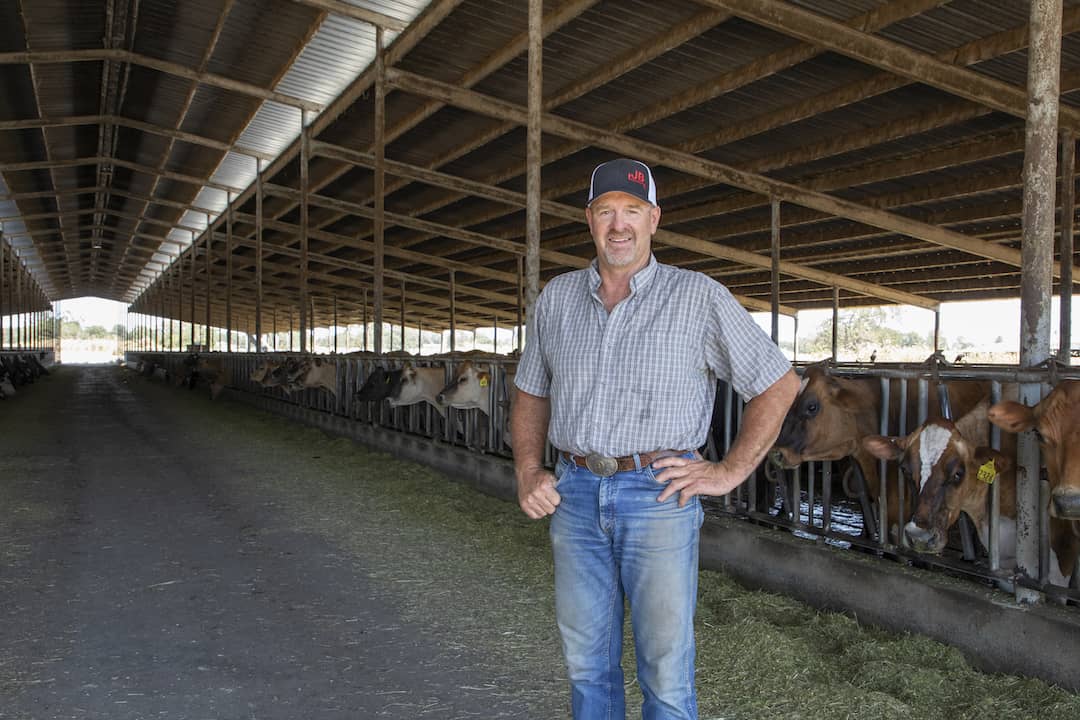
California was always part of the Wild West from way back, says Chiatri de Laguna Farm owner Wendy Krupnick, who tends to a third of an acre of vegetables along with a heritage fruit tree orchard near Santa Rosa. “In many ways it was corporations and big landowners who came in and took over and didn’t want anyone telling them what they could or couldn’t do in regard to water. We’ve used water beyond our carrying capacity over decades, but it seems whoever had the most money got the most water.”
Water, she adds, can’t be considered yours or mine. “It’s a shared resource.”
Krupnick describes her operation as a diversified market garden with a farmstand. “I’m on a well and have always been incredibly conservative with water. I went through the drought of the 1970s, when we were told to save every drop, so it’s just become a way of life for me. I add mulch, use drip irrigation and put in cover crops to conserve water. My native plants suffered last year because I barely watered them, and the fruit trees were stressed. I tried cutting off water from the potatoes last year and what I got were small potatoes and lots fewer of them. Many of us small farmers are just trying to do our best.”
After last year’s drought, one of the Community Supported Agriculture (CSA) growers at Green Valley Farm + Mill near Sebastopol had to move elsewhere. There was not enough water security onsite for the quantity of annual crops they were growing, explains Green Valley Farm + Mill co-owner Temra Costa. “So we’ve shifted our model to lease land to farms that can fit within the resources available onsite. Farms here mainly use the rain-fed pond water instead of pumping water out of the ground because we want to be good stewards of the land and creek.”
Costa says the operation she co-manages works to adhere to this mantra: We are in an increasingly water insecure area, so we try not to use more than we have. “We have cows grazing here and they are a relatively low-water impact due to onsite farm Bramble Tail Homestead’s holistic herd management practices, and we’ve also scaled down our crop production accordingly.”
Throughout Sonoma County, farmers and ranchers large and small are preparing for another year of water scarcity. When interviewed in May, these farmers were cautiously optimistic.
Reclaimed water essential
Keeping Doug Beretta up at night is the fear that he won’t have enough feed for his dairy cows this year. The owner of Beretta Family Dairy, a 100% organic dairy west of Santa Rosa, says for now he has enough fresh water for his 300 cows and for meeting the sanitation regulations in his milking barn. “Our wells are able to pump for drinking and barn sanitation. The bigger problem is a lack of irrigation water that will force us to purchase more feed that may not even be available because it must be organic feed.
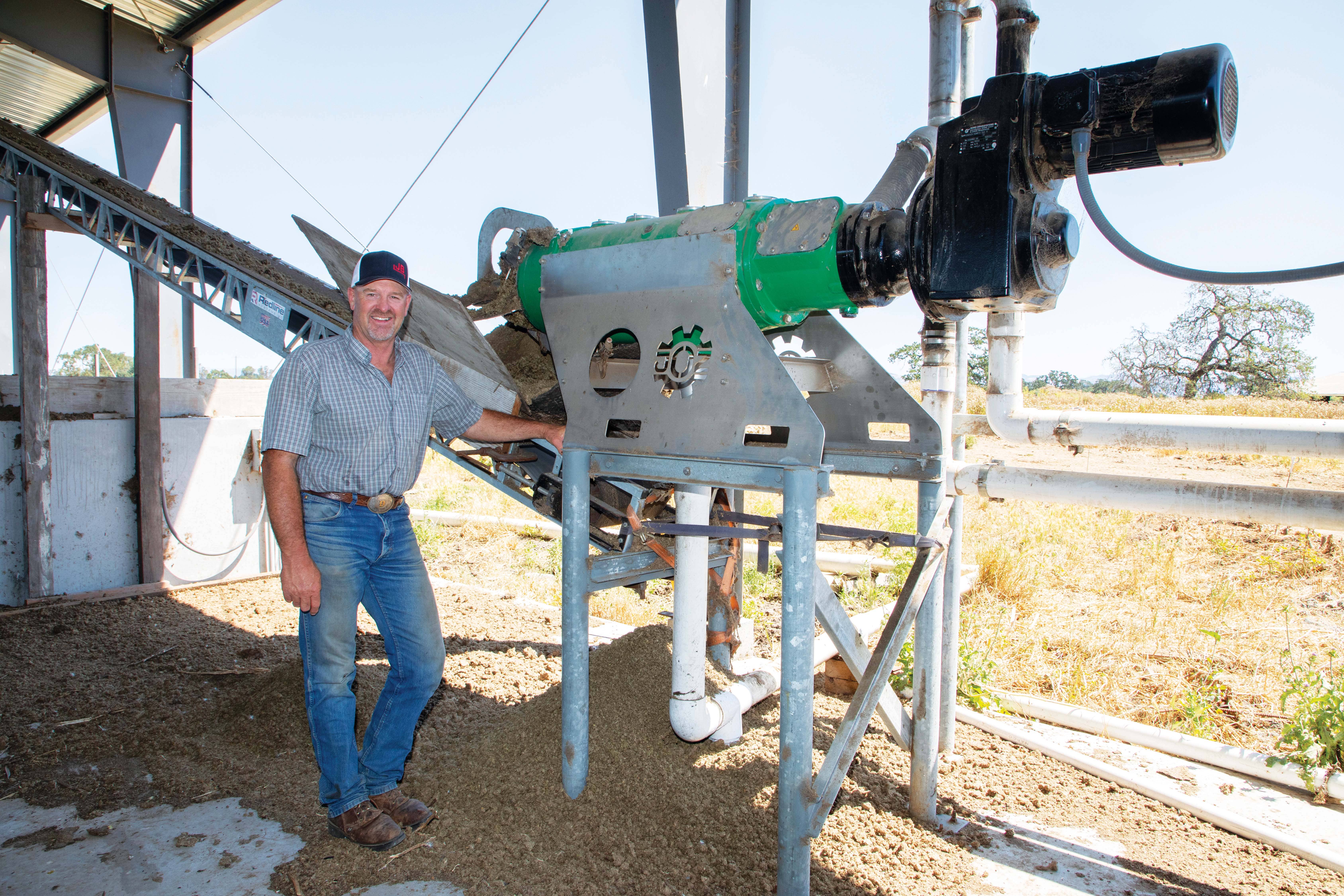
The feed shortage has been so acute that last year Beretta sold about 15% of his herd, which went to other dairies out of the area. “It wasn’t a water problem but a feed problem.”
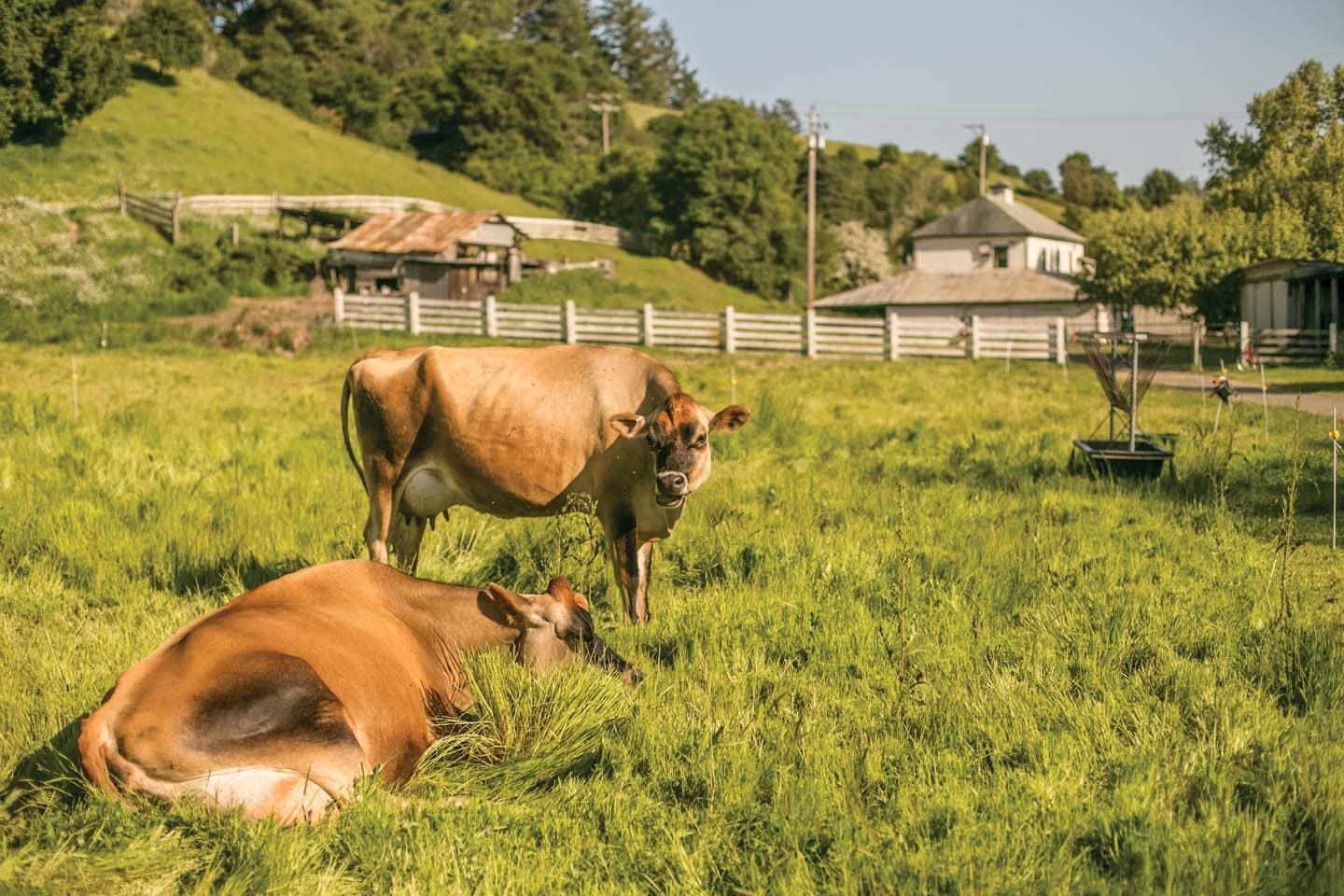
To make reclaimed water go farther, the dairy uses a manure separator that separates the solids away from the water, and that water is then mixed with the reclaimed irrigation water. “That’s been a normal practice of ours for years,” says Beretta. “But from a dairy standpoint, there’s not much more we can do to conserve water. I just don’t understand why people keep pointing the finger at agriculture as the ones using all the water. I don’t think the majority of people who live here know or understand that when they flush their toilets and take showers, it’s helping the farming community by creating reclaimed water.”
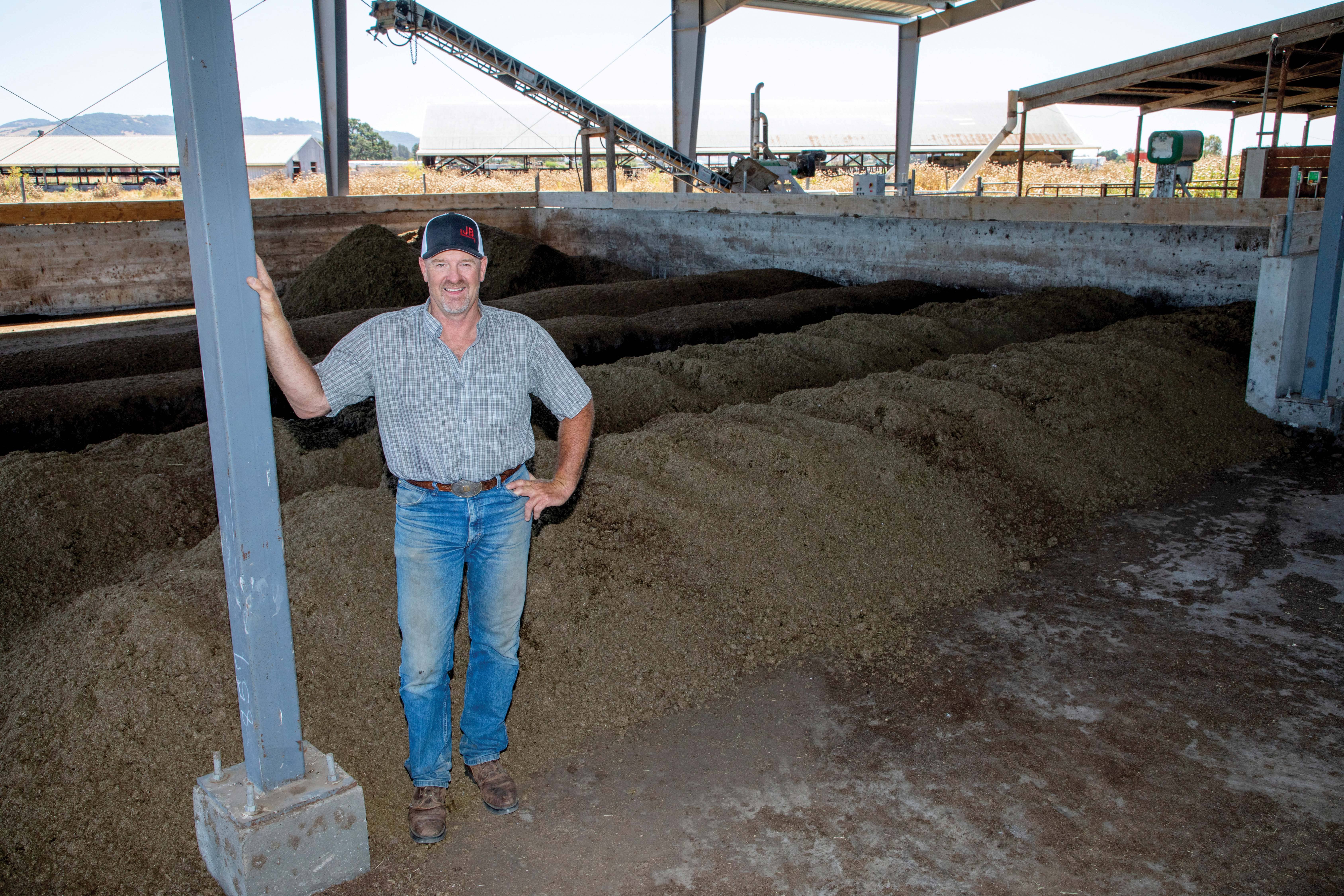
Focus on water storage
Mike Wade, executive director of the California Farm Water Coalition, who gave a presentation on May 11 at the Sonoma County Farm Bureau’s Water Summit, explained that the Sustainable Groundwater Management Act—passed into law in 2014 and beginning this year—creates water pumping restrictions and caps on water use. Water rights curtailments are being evaluated with an eye toward “rebalancing” California’s water supply, he said. “What’s at stake is competition for a diminishing global food supply, fewer choices in the grocery store and higher prices, and imported food safety concerns.”
In California, he said, water is shared across three main sectors: 50% is environmental, 40% is for agriculture and 10% is for urban use—figures compiled by the Public Policy Institute of California (PPIC). “The percentage varies across regions and between wet and dry years,” he added. (Environmental water includes rivers protected by law as wild and scenic, water required for maintaining habitat within streams, water that supports wetlands within wildlife preserves, and water needed to maintain water quality for agricultural and urban use, according to the PPIC.)
More than half of all fruits, nuts and vegetables produced in the United States are grown on California farms, said Wade, and the state is the sole producer of 14 different commodities. “Production can’t simply be moved to other states because of weather extremes, oppressive humidity and too much rain.”
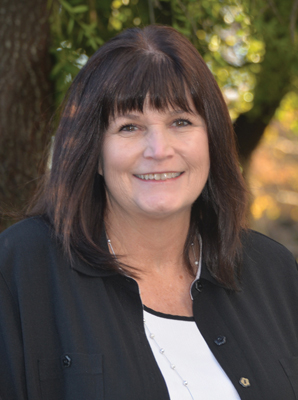
“We need to stop talking about water scarcity and more about water storage,” says Tawny Tesconi, former executive director of the Sonoma County Farm Bureau, who has since retired. “The focus should not necessarily be on dams and reservoirs, but on groundwater recharge. We can hold about 10 times the water in the ground than we have now, and we’ll eventually have the infrastructure in place to figure that all out. Funds from the Proposition 1 are supposed to help us get shovels in the ground to start these projects. Much more effort should be put into accepting the drought and figuring out how to move forward.”
Drought as a fear factor
From an economist’s point of view, the larger issue regarding water is climate, “because predicting seasonal or even annual rainfall and drought is sort of a fool’s game,” says David Roland-Holst, Ph.D., of the department of agricultural and resources economics at the University of California, Berkeley. “For sure, we have global warming, but water scarcity is a slightly different issue because it also depends on demand and falls differently on different stakeholders. While we pride ourselves on California’s agricultural diversity, the cost of water is different for different ag systems. It would be nice if there was one rational and equitable formula for all farmers.
“In our recent history, over the past 100 years or so, water was more abundant,” adds Roland-Holst. “It was also subsidized, and that discourages water-efficient crop and technology choice. It’s a very simple maxim in economics that you don’t subsidize resources because that promotes overuse. California has a long history of policies that kept the price of water low, and this doesn’t make sense in an arid state.”
Water is also a stubborn political issue because it is tied to property rights, he adds. “More boundary disputes have been settled at the business end of an irrigation shovel than any other tool. The Gold Rush era ushered in legacy water rights and a California farmer’s revolt against hydraulic mining in the 1880s dethroned gold as the state’s dominant economic activity,” he says. “Today, more efficient water allocation could be achieved with a statewide tradeable water market, but these markets can’t work with legacy property rights and other institutional barriers.” He hopes that things will change soon. “Like wildfires are awakening us to the reality of climate change, drought reminds us of the true value of water and the importance of conserving it.”

Last year was the first year Rich Little of Little Vineyards near Glen Ellen had seen Sonoma Creek almost dry up completely. The creek backs up to the Littles’ property, where they grow 17-and-a-half acres of red winegrapes. “We do fish-friendly farming and we’re certified to keep the fish alive in the creek,” he says. “The salmon have to keep running so they can spawn and they need water where they can lay their eggs. But last year the water in the creek was barely moving. It’s a huge concern––to make certain we are helping the salmon, too. It’s not all about us.”
Little has a pond on the property holding 2.6-acre feet of water. It’s fed by a system of French drains on a 5-degree slope that collects additional rainwater. “The pond water is high in nutrients and the grapes love it, so we use that water when we can.”
The Littles bought the property nearly 30 years ago. Thirty years before that, the owner at the time was approached by the Sonoma County Water Agency about putting an aquifer through the property. “So that is fully charged with very good, pressurized water, and we get that water at a surplus rate,” Little says. “But in drought years, they’ll call to say they have to cut us off, and that’s usually at the point in our growing season when we really need it. The quickest way to kill a young vine is to not water it. So that’s when we have to turn to our pond water.”
Waking up optimistic
Some grapegrowers in Sonoma County received their average amount of rainfall this past season, or about 30 inches, says Karissa Kruse, president of Sonoma County Grapegrowers. “Certain areas are in better shape than others and those growers are not as stressed about water. Others feel their reservoirs have enough water to get them through the growing season.”
When grapegrowers discuss the future of living with drought, Kruse says, something like desalination isn’t even part of the conversation. “Farmers are practical and focus on things they have some power over, so many are exploring whether it pencils out to invest in developing reservoirs, which in some cases means pulling out vineyards to have room for development. Big red-tape and permitting projects like desalination plants are far away from anything they see as tangible.”
In late May, she said it was still too early to know if water scarcity in the vineyards would make an impact on this year’s harvest. “But every spring, grapegrowers wake up optimistic and somehow they always get through the growing season.”
Desalination: Is it a Viable Option?
Water, water everywhere––off the coast of California––and not a drop to drink or use for irrigation. Unless, of course, the state moves forward aggressively with building large-scale desalination plants, and that’s not likely anytime soon. The idea of desalination, or the removal of salt from sea water so that it may be used as fresh water, has been difficult to sell to Californians.
One large desalination plant already exists in California, having opened in 2015 in San Diego County at a cost of $1 billion. The company that built the plant, Poseidon Water, proposed a similar plant for Huntington Beach in Orange County that had been under debate for more than 20 years. In mid-May the California Coastal Commission voted down the project.
Turning sea water into fresh water by millions of gallons per day is not without its drawbacks. Environmentalists have cited that desalination plants require too much energy to run, the filtering systems harm marine life, sea level rise may compromise their coast-side operations, and the potable water that is produced would be costly for consumers and agriculture customers.
Gov. Gavin Newsom had strongly encouraged the Coastal Commission to approve the Huntington Beach project. Before the commission turned it down, however, he told the media, “We need more tools in the damn tool kit,” referring to desalination to help ease the impacts of drought. “We are as dumb as we want to be. [Killing the Huntington Beach project] would be a big mistake, a big setback.”
Sustainable Groundwater Management Act
Ask the average Californian about the Sustainable Groundwater Management Act (SGMA), which they helped vote into law in 2014, and their response is likely to be, “The what?” Historically, landowners in California have drawn as much groundwater as they desired, without limits or monitoring. The act aims to curb over-pumping of water from underground aquifers, the first time the state has made such monitoring mandatory.
In essence, the legislation necessitated the formation of Groundwater Sustainability Agencies (GSAs), which must develop and implement Groundwater Sustainability Plans (GSPs) for managing and using groundwater in all high- and medium-priority water basins in the state. Approximately 500 basins have been identified around the state, but only about a quarter of these require submitting GSPs.
Three of Sonoma County’s basins––Sonoma Valley, Santa Rosa Plain and Petaluma Valley––were listed in 2015 as among 127 basins statewide that are in danger of being depleted. Depleted aquifers can bring about worst-case scenarios such as sinking land, saltwater leaching into freshwater and permanent losses of underground water storage capacity.
It’s a complicated subject, with many stakeholders involved in the planning, and the work needed to implement the monitoring has rolled out slowly. In 2015, Sonoma County was given seven years to come up with a plan to keep its aquifers from sustaining permanent damage. Plans were submitted a few months ago to the California Department of Water Resources (DWR), which has up to two years to evaluate and approve the plans. The DWR must complete evaluations of all GSPs in the state by January 31, 2024. The basins must then achieve sustainability by the year 2042 using measurable objectives in increments of five years.
Tawny Tesconi, former executive director of the Sonoma County Farm Bureau, now retired, says that of many GSPs already submitted around the state by their GSAs, very few have been approved. “The general overview is that the state water resources board will say a plan isn’t right, but they don’t say what needs to be fixed. There’s been a lot of frustration around that.”
In the meantime, fees set by the GSAs for residents with wells in Sonoma County will be implemented within a few months.
Tesconi says there’s been a big communication gap to educate residents about groundwater monitoring and how it will affect them. “I’m hearing from people in rural areas because there is no voice for them except the Farm Bureau. They are aware there are conversations around groundwater sustainability but not aware they would be charged for it, and that’s a concern for many folks.”
Small and underrepresented California farmers seem to be left out of the SGMA equation altogether, according to a report released in June. Among 14 GSAs studied, few considered the impacts of their plans on farmers growing on small acreages, tenant farmers, those with shallow wells, and farmers from underserved communities. The report, entitled “SGMA and Underrepresented Farmers,” was conducted by Clean Water Action, Community Alliance with Family Farmers (CAFF), Civic Well, University of California Agriculture and Natural Resources, and the Leadership Counsel for Justice and Accountability.
As noted in the report, none of the plans reviewed included efforts to provide language and culturally appropriate outreach to engage these affected farmers when drafting their plans. “Our analysis found that the concerns of small farmers as a whole have been largely ignored by the local GSAs,” stated Ngodoo Atume, policy analyst for Clean Water Action, in a press release. “How can local basins achieve sustainability when plans fail to consider and address everyone who relies on groundwater?”
For more information about groundwater monitoring, visit water.ca.gov, ca.water.usgs.gov, and sonomafb.org.
[Lead photo by Duncan Garrett Photography]
Author
-

Jean Doppenberg is a lifelong journalist and the author of three guidebooks to Wine Country.
View all posts



